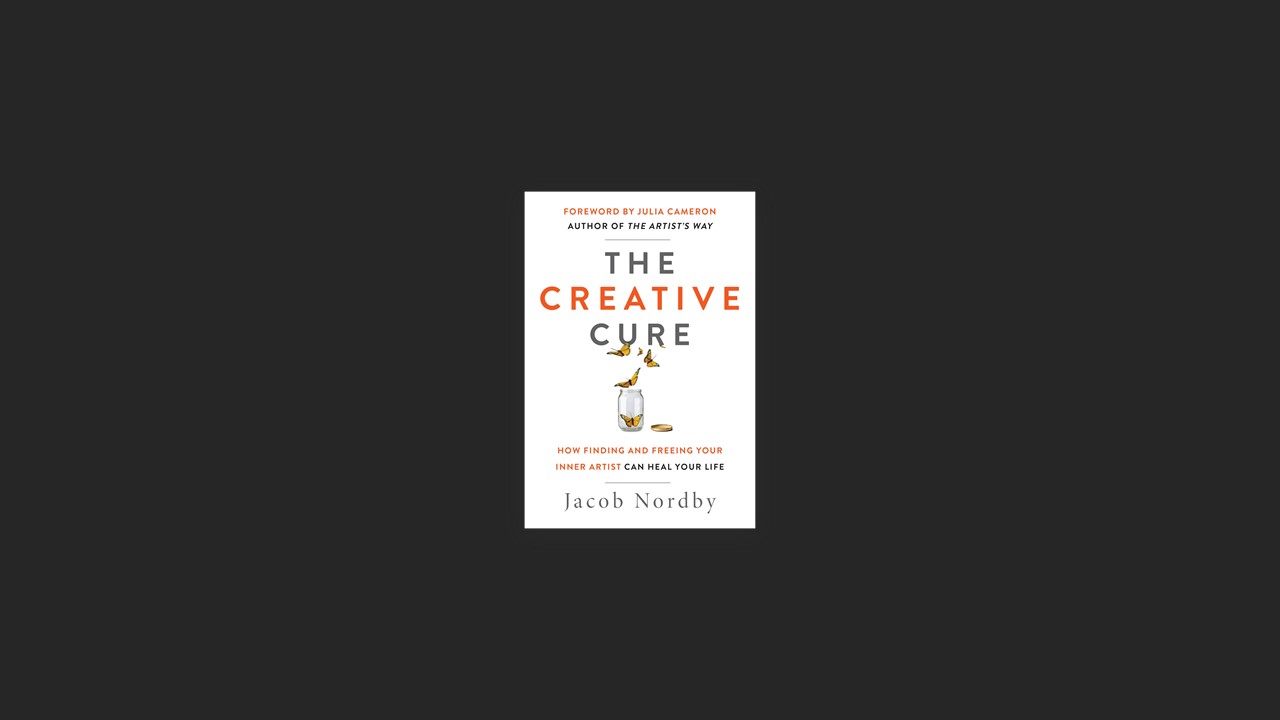Your Creative Birthright
Creativity is your birthright. You were born possessing this quality. Even if you have lost or forgotten about certain aspects of your inner creative self, every breath and heartbeat can be a new opportunity to reclaim and develop this elemental part of you
This book is an invitation to come back home to yourself in two ways. First, by building a creative practice that revitalizes your creative birthright. And second, by teaching you to channel this creative power into other areas of your life, such as your job, your home, your relationships with others, and, most importantly, your relationship with yourself.
Joy and the Art of Self-Discovery
Here’s the thing: joy and creativity go together. One way to look at it is like this: Joy is your guide, and creativity is the method by which you travel.
How does this work? One way to think of it is that joy and creativity will show you the simplest path toward your heart’s deepest desires. You can learn the habit of asking yourself what will bring you joy and then pursuing that thing. Whether it’s the simple delight of a morning coffee outside or the profound wonder of exploring a part of the world that’s new to you, pursuing joy will help you decide what’s important for you and what doesn’t matter at all. In this way, joy can show you the shortest distance between two points: where you are and where you want to go. Being creative, or turning your life into a work of art, is the means to get there.
When you are completely engrossed in creating something, whether it’s a soup for the evening meal or putting paint on a canvas, you have found a moment of joy.
Restoring Imagination
Every human creation on earth began in someone’s imagination. Whether it’s the car you drive, the clothing you wear, the book or device you are using to read these words, or the city you live in or near—all of it started with a seed of imagination watered by the creative process.
There’s a way to be both grounded and wildly imaginative, to be creative and responsible, to daydream and reach your goals. Unfortunately, this isn’t the norm for most people. Nearly all of us get herded into adulthood by parents, teachers, and other well-meaning adults who try to teach us the discipline and skills they think we need to survive in the world. This happens through the process of socialization, and many of us have set aside the productive use of our imagination to appease its demands. Worse than that, socialization has a specialized tool that shuts down imagination every time: in order to enforce the power of social norms that don’t feel right for us, we have to believe that we are not good enough just as we are.
Knowing Before Knowing
Have you ever made a decision without giving it much thought and then later found out that it was life-altering?
I believe that our intuition is working on our behalf even when we aren’t conscious of it. Just imagine how powerful it can be when we work with it consciously.
The problem is that most of us weren’t taught the skill of listening to and following our intuition, as we live in a society that’s imbued with a logic-based cultural bias. This makes us wary to trust our gut feelings or notice the kinds of irregular patterns or even weird events that the right brain excels at processing.
If you feel you’ve lost touch with your intuition, reconnecting to it can feel awkward at first. You may not feel confident in distinguishing between an intuitive feeling and wishful thinking. You might fall into old habits, fears, or biases and think that they are protective warnings. Like any other skill, it takes a willingness to keep trying—trusting and experimenting, paying attention to how things play out, and checking in with your feelings again and again.
Reclaiming the Power of Story
What makes a good story? I would say the ingredients include the characters, the conflicts, and the journeys or quests, both small and large, that we undertake throughout our lives. Within this very basic framework lies infinite potential to create any kind of narrative, from a fun and silly bedtime story to a deeply personal conception of the meaning of one’s own life.
We create these stories in collaboration with the people and cultures around us. For instance, our first story of who we are, our “character,” is mostly based on what others tell us about ourselves as children and throughout life: “You’re like this. You’re good at this but not at that. In this family we do things this way.” Whether through words or examples, the innocent child in us picks up these endless stories and incorporates them into our personal story.
If a deep part of your mind believes you are undeserving, unworthy, uncreative, or anything like this, it pushes you into self-limiting behavior that is consistent with that belief. These things often baffle us, since we know deep down we don’t want to do things that will lead us away from our greatest potential or bring us anything but joy.
What Is a Creative Practice?
When it comes to creativity, reading this book has hopefully reinforced why it’s so important to nurture this healing force in our lives. Many of us are yearning for more imagination, deeper emotional connection, and expanded creative expression. So how do we accomplish this? Creative practice is the process of this work, the way it shows up and brings its many gifts to our daily lives.
Fostering a Growth Mindset
You may have heard of a “growth mindset,” defined by researcher Carol Dweck as the belief people have about themselves that their most basic abilities can be developed through dedication and hard work. A “fixed mindset,” in contrast, maintains the belief that our skills and talents are basic qualities we can’t really change, which leads us to spend our time displaying these qualities instead of cultivating them.
Making a Commitment
Sometimes the inspiration to do so can feel elusive, especially if we’re waiting around for it to strike in our artistic pursuits. Just as in a romantic partnership, we can commit to being there even on days we don’t feel particularly inspired.
When in doubt, go small and set the intention to do one thing a day. Repeating even the smallest creative actions builds up over time and pays dividends.


